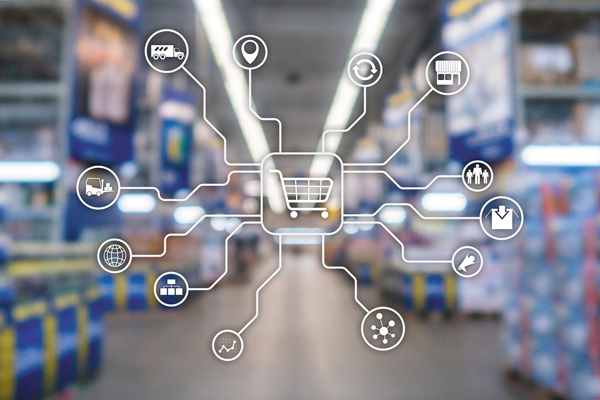
By Christian Dow
The wall separating the front of a retail store from the back of the building is the line of scrimmage, and due to the pandemic, the back of the store is marching downfield with momentum while the front of the store gives up ground.
That’s the message from supply chain experts who are helping retailers adjust to the new retail landscape—one in which online ordering for curbside pickup is posing as big a challenge to operations as the rapid growth of online ordering for parcel delivery.
Many retailers are finding that the solution to both issues is automated material handling equipment and software that increase throughput and reduce labor costs. But in order to turn the back of the store into a micro-fulfillment center, the wall may have to be moved forward, shrinking the front of the store. Retailers have only so much square footage to work with, after all.

Moving that wall is something many retailers simply must do to accommodate the rise of online shopping, especially since consumers have enthusiastically embraced curbside pickup and will continue demanding that service after the pandemic abates, according to Rupesh Narkar, director of sales, consumer goods in the Americas for MHI member Swisslog Logistics Inc.
Narkar said consumer demand for curbside pickup is affecting the way retailers of all types do business, and he points to Taco Bell as an example. The fast-food giant recently opened a store in Times Square that allows customers to order through its website or mobile app and pick up their food at the restaurant. There’s a separate double-door entrance allowing those customers to skip the traditional restaurant experience entirely, according to the trade publication Chain Store Age.
Customers go directly to the pickup area, enter their order number on a touchscreen and grab their meals from a designated cubby. With automated equipment such as vertical storage solutions and goods-to-person picking systems, automation can be implemented in both the back of the store and the customer-facing front, making operations more efficient for the retailer and more convenient for the customer.
 MHI Solutions Improving Supply Chain Performance
MHI Solutions Improving Supply Chain Performance